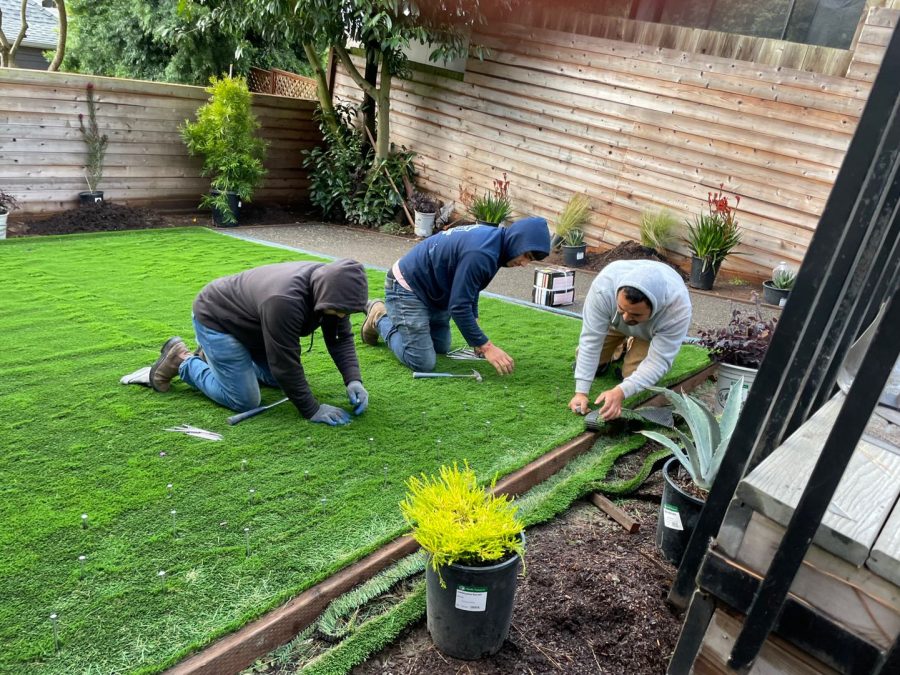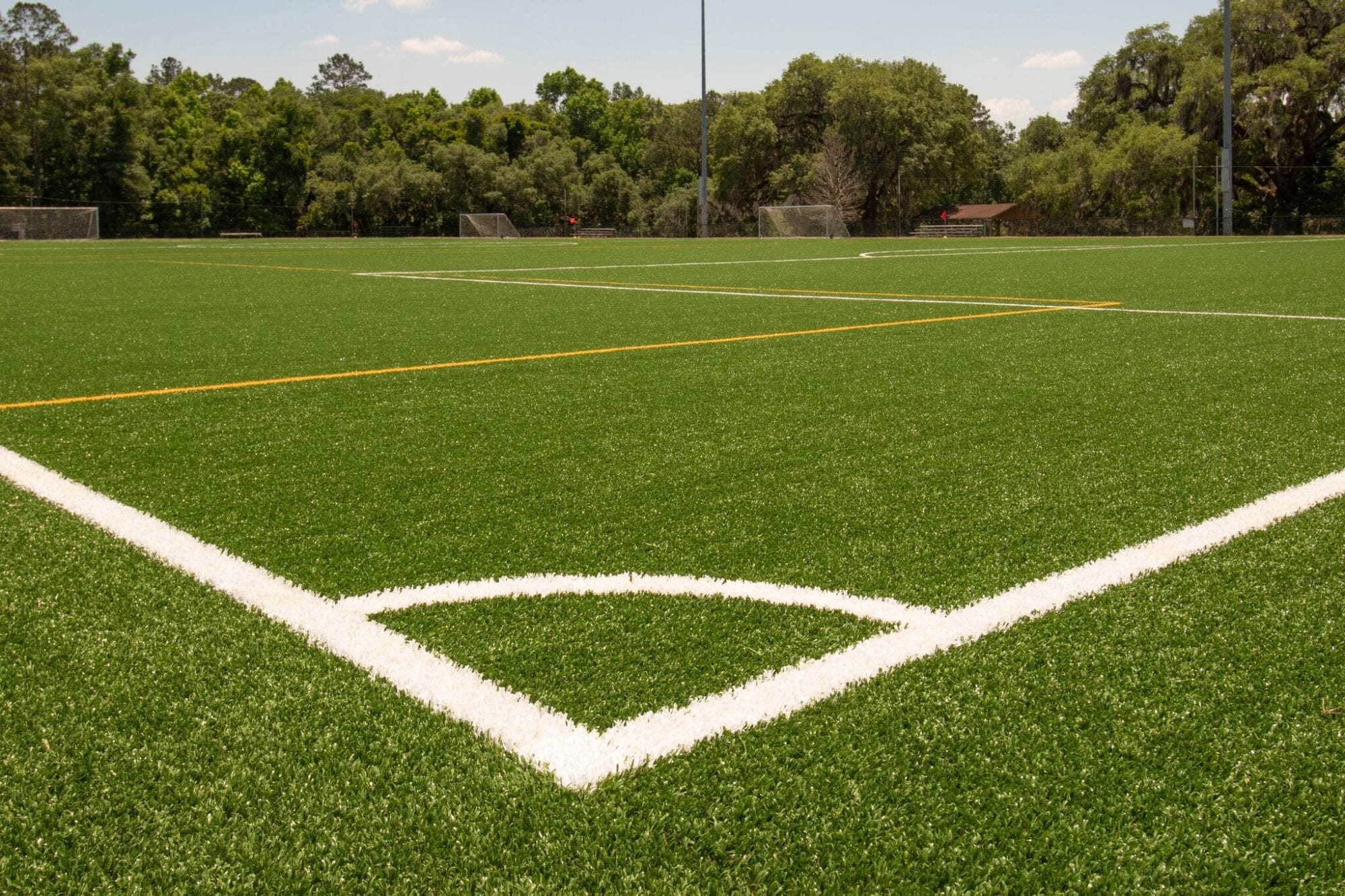Explore the Environmental Perks of Opting for Artificial Grass Solutions
The adoption of fabricated grass remedies offers an engaging opportunity to deal with pushing ecological difficulties. By significantly decreasing water use and lessening the application of harmful chemicals, these choices not just promote lasting landscape design but also shield regional communities.
Water Conservation Perks
One of the most significant advantages of synthetic grass is its capacity to preserve water. Typical yard lawns require substantial irrigation, particularly in locations vulnerable to drought or water limitations. On the other hand, synthetic grass does not require watering, considerably reducing the general demand for water resources. This feature is particularly valuable in dry areas where water shortage is a pushing worry.
By removing the need for normal watering, synthetic grass adds to lasting landscape practices and aids reduce the ecological influence of too much water consumption. The preservation of water extends to the reduction of overflow, which can lead to soil disintegration and river contamination.
Furthermore, the installment of synthetic grass permits municipalities and house owners to designate water sources extra effectively, concentrating on important uses such as drinking water and farming. The shift towards synthetic grass not just advertises accountable water use however likewise straightens with more comprehensive ecological objectives aimed at preserving all-natural sources.
As neighborhoods significantly focus on sustainability, the water preservation benefits of artificial turf offer an engaging situation for its adoption in domestic and commercial landscaping jobs.
Decreased Chemical Usage
The change to synthetic grass dramatically reduces the dependence on chemical therapies generally used in natural lawn upkeep. Typical lawn administration commonly involves the application of plant foods, pesticides, and herbicides to promote development and control insects. These chemicals can present dangers to human health, neighborhood wildlife, and the atmosphere, contributing to dirt and water contamination.
On the other hand, man-made turf gets rid of the demand for these harmful substances. When set up, it calls for marginal upkeep, primarily being composed of normal cleaning and seldom infill replenishment. This decrease in chemical use not just profits the prompt setting however also adds to wider environmental security. By minimizing the launch of artificial substances into the environment, man-made lawn advertises healthier dirt and water supply.
Furthermore, the lack of chemical drainage related to artificial lawn installations assists safeguard local waterways from contamination, supporting marine life and keeping biodiversity. Arizona artificial turf. As neighborhoods increasingly prioritize lasting methods, opting for synthetic grass presents a viable remedy that lines up with ecological conservation goals. With this change, property proprietors can enjoy lavish green rooms without jeopardizing environmental health and wellness, leading the way for a much more lasting future
Reduced Carbon Footprint

In addition, the setup of synthetic grass can result in considerable water conservation. Natural grass call for substantial amounts of water for irrigation, which not just includes to the carbon impact connected with water extraction and therapy but additionally strains local water sources. On the other hand, fabricated lawn needs very little upkeep, requiring no watering, therefore dramatically minimizing water usage and its connected energy costs.
In addition, the durability of fabricated lawn adds to its decreased carbon influence. With a life expectancy of approximately 15 years or even more, the requirement for constant replacements is diminished, leading to much less waste and lower power consumption in production and taking care of conventional grass alternatives. In general, fabricated turf provides a sustainable option for ecologically aware landscape design.
Habitat Conservation
Environment conservation is an essential factor to consider in the argument over landscape design choices, especially when comparing fabricated grass to all-natural lawn. Natural yard yards frequently need considerable upkeep, consisting of the use of fertilizers, pesticides, and herbicides, which can negatively affect regional communities. These chemicals can seep into the dirt and rivers, hurting native flora and animals and interfering with neighborhood environments.
In comparison, man-made lawn offers an opportunity to lower the environmental footprint of landscape design. By opting for synthetic grass, homeowners can minimize the disturbance of natural environments connected with traditional grass care methods. Synthetic grass eliminates the need for harmful chemicals, consequently protecting neighboring wildlife and keeping the honesty of surrounding environments. Furthermore, the installation of synthetic grass can bring about the conversion of previous lawn areas right into more biodiverse landscapes, such as pollinator gardens or native plant areas, which can sustain regional wild animals.
Ultimately, the shift to man-made lawn not only saves water and decreases upkeep efforts however additionally promotes a more Homepage unified connection between human activities and that site the all-natural environment, advertising environment conservation at the same time.
Long-Term Sustainability
Long-lasting sustainability is a vital element in assessing the advantages of man-made lawn over standard lawn yards. One of the most significant advantages of synthetic lawn is its durability; it can last as much as 15-20 years with very little upkeep, whereas all-natural grass requires constant reseeding and substitute. This longevity decreases the need for constant sources, such as water, fertilizers, and pesticides, which are important for maintaining a healthy and balanced turf lawn.
In addition, synthetic lawn adds to a decrease in carbon exhausts related to lawn care devices. Standard grass commonly require gas-powered mowers, trimmers, and blowers, all of which add to air contamination. Turf installation phoenix az. In comparison, synthetic lawn removes the requirement for such devices, promoting a cleaner atmosphere
Additionally, the production of synthetic turf progressively uses recycled products, enhancing its sustainability profile. As makers adopt green practices, the ecological footprint of synthetic grass remains to diminish.

Conclusion
The fostering of man-made lawn services presents significant ecological advantages, consisting of substantial water conservation, minimized dependence on harmful chemicals, and a lower carbon footprint. Man-made turf aids in protecting natural habitats by minimizing land disturbance and advertising long-term sustainability via the usage of durable materials. Collectively, these elements emphasize the capacity of man-made grass to add positively to ecological wellness and supply a viable choice to conventional landscaping techniques in a significantly resource-conscious world.
In contrast, synthetic lawn does not require watering, you can find out more substantially decreasing the general need for water sources. By lessening the launch of artificial substances into the ecosystem, man-made grass promotes healthier soil and water systems.
In addition, the installation of fabricated turf can result in considerable water preservation. In comparison, artificial turf needs marginal upkeep, requiring no watering, thereby considerably lowering water use and its linked power expenses.
